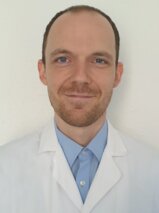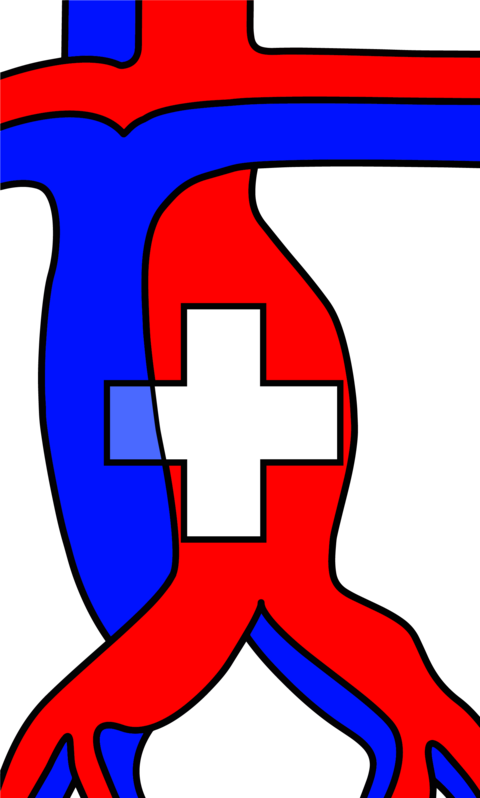“To err is human” – a valid catchphrase for the daily versatile business of trauma care in severely injured patients. This “storm for errors” (1-4) results from time-sensitive decisions, uncertainties regarding trauma mechanism and medical history. An evident approach for the improvement of care for these patients is learning from errors. In several specialties, morbidity and mortality (M&M) conferences are resources for the identification of errors. However, in the broad multidisciplinary field of trauma care with local particularities (5, 6) this goes along with difficulties. Underestimated mortality (7) and morbidity (8, 9) and long hospital length of stay in a multidisciplinary setting represent a few. Therefore, open questions regarding the M&M arrangement, error identification, potential for mitigation and categorization remain.
Since more than ten years, there is a Trauma M&M at Bern University Hospital. Bern University Hospital is an academic Level I Trauma Center with an annual admission rate of approximately 2500 trauma and 650 severely injured patients. In 2013, a multidisciplinary and interprofessional monthly Trauma M&M was implemented. Trauma deaths and selected morbidities are presented according to a standardized protocol and discussed in a multidisciplinary plenum of physicians of various specialties (emergency physicians, visceral-, orthopedic-, neurosurgeons, radiologists, intensivists, anesthesiologists, etc.) as well as nurses. Of note, any caregiver at Bern University Hospital can schedule a patient for discussion at the Trauma M&M. A senior attending surgeon or senior emergency physician moderates the meeting. Emergency department physicians present patients and injury characteristics, diagnostics and therapeutic decisions and measures in a detailed and chronological manner from admission to the shockroom to the ICU and ward. A senior radiologist presents the images. In a multidisciplinary discussion, potential drawbacks or errors are identified and every discussed case is protocolled in a report.
From 1/2013 to 12/2022 a total of 189 patients were discussed at the Trauma M&M. The Trauma M&M protocols were searched for discussed errors, which were categorized in nine categories and further processed in descriptive statistics (Figure 1). The review is based on a common definition of error from J. Reason (10) as “the failure of a planned action to achieve its desired goal” and a Communication model from Grice (11) which defines the maxims of quality, quantity, relevance and manner for functional communication.
The resulting study population showed a median age of 59 (IQR 37-77) years and a mean injury severity score of 32±14. A total of 68% were male and 92% suffered from blunt trauma. Falls from >2 meters (n=69) and traffic accidents (n=69) were the most common mechanism of trauma. Severely injured body regions (abbreviated injury scale score ≥3) were head (n=124), chest (n=78), lower extremity (n =46), or abdomen (n=40). The study population underwent various acute interventions: emergency laparotomy (n=26), decompressive craniectomy (n=19), resuscitative emergency department thoracotomy (n=13), REBOA (n=12), or ECMO in severely hypothermic patients, n=7). Fifteen patients were transferred from external hospitals. There were 145 fatalities with a median time to death of 13 hours (IQR 1-48); 37% of the patients died during the first three hours of admission. In survivors, median hospital length of stay was 38 days (IQR 20-96).
Out of the 189 severely injured patients discussed at the Trauma M&M, 130 potential errors were identified. The frequency of categorized errors are listed in Figure 1.
The three most common potential errors were related to communication problems (n=29), gaps in skills or knowledge (n=24) and procedure delays (n=19). Device errors were the rarest occurring (n=2). The nineteen potential delays of procedures included fourteen diagnostic and five therapeutic delays.
In conclusion, the analysis of ten years of Trauma M&M revealed communication problems as leading potential errors followed by gaps in skills or knowledge as well as potential delays in diagnostics and treatment interventions. The Trauma M&M in this highly multidisciplinary and interprofessional setting proved to be an effective mean of identifying and discussing errors that may lead to a new error categorization in the future. Moreover, the Trauma M&M is established as an important teaching event providing education and awareness for common error patterns.
The interdisciplinary and interprofessional setting of the Trauma M&M seems particularly important to us. Over the last 10 years, we have also found that this has created a common language and significantly improved mutual understanding between all caregivers. This ultimately benefits seriously injured patients in the daily practice.
- Gruen RL, Jurkovich GJ, McIntyre LK, Foy HM, Maier RV. Patterns of errors contributing to trauma mortality: lessons learned from 2594 deaths. Annals of surgery. 2006;244(3):371.
- Teixeira PGR, Inaba K, Hadjizacharia P, Brown C, Salim A, Rhee P, et al. Preventable or Potentially Preventable Mortality at a Mature Trauma Center. Journal of Trauma and Acute Care Surgery. 2007;63(6):1338-47.
- LaGrone LN, McIntyre L, Riggle A, Robinson BRH, Maier RV, Bulger E, et al. Changes in error patterns in unanticipated trauma deaths during 20 years: In pursuit of zero preventable deaths. Journal of Trauma and Acute Care Surgery. 2020;89(6):1046-53.
- Schoeneberg C, Schilling M, Probst T, Lendemans S. Preventable and potentially preventable deaths in severely injured elderly patients: a single-center retrospective data analysis of a German trauma center. World J Surg. 2014;38(12):3125-32.
- Choi J, Carlos G, Nassar AK, Knowlton LM, Spain DA. The impact of trauma systems on patient outcomes. Curr Probl Surg. 2021;58(1):100849.
- Kleber C, Giesecke M, Tsokos M, Haas N, Buschmann C. Trauma-related preventable deaths in Berlin 2010: need to change prehospital management strategies and trauma management education. World journal of surgery. 2013;37:1154-61.
- Heim C, Bosisio F, Roth A, Bloch J, Borens O, Daniel RT, et al. Is trauma in Switzerland any different? epidemiology and patterns of injury in major trauma - a 5-year review from a Swiss trauma centre. Swiss Med Wkly. 2014;144:w13958.
- Kronman AC, Paasche-Orlow M, Orlander JD. Factors associated with disclosure of medical errors by housestaff. BMJ quality & safety. 2012;21(4):271-8.
- Etchegaray JM, Gallagher TH, Bell SK, Dunlap B, Thomas EJ. Error disclosure: a new domain for safety culture assessment. BMJ quality & safety. 2012;21(7):594-9.
- Reason J. Understanding adverse events: the human factor. In: Vincent C, editor. Clinical risk management: enhancing patient safety. London: BMJ Books; 2001. p. 6-30.
- Grice HP. Logic and Conversation Syntax and Semantics (Vol. 3). Speech Acts (col Morgan, J, eds) New York. 1975:41-58











